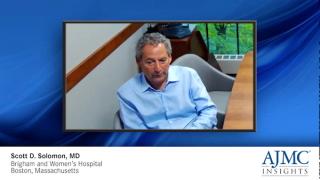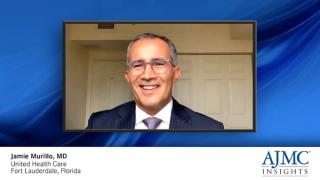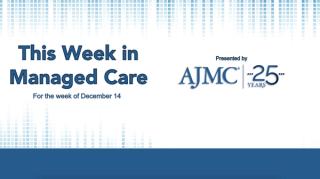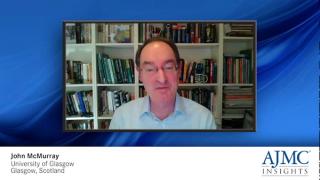
Heart Failure
Latest News

Latest Videos

CME Content
More News

This new study, which the authors claim is the first to do so, investigated the relationship between COVID-19 vaccination status and survival outcomes among individuals with heart failure.

Sacubitril/valsartan reduced mean pulmonary artery pressure (mPAP) and improved lung congestion, functional capacity, and quality of life in a subset of patients with heart failure with preserved ejection fraction and pulmonary hypertension (HFpEF-PH) using a remote monitoring platform.

This new study, from Taiwan, investigated how menopause affects ventricular structure and function and its possible impact on heart failure among women.

Thirst outcomes were investigated among patients with stable heart failure (HF), due to the limited data available on this relationship and how it, along with fluid and sodium intake, influences clinical outcomes in this population.

This study evaluated levels of 4 biomarkers associated with heart failure with reduced ejection fraction (HFrEF) before and after treatment with the angiotensin receptor neprilysin inhibitor sacubitril/valsartan.

Two periods of sacubitril/valsartan initiation were compared in a study population of patients with heart failure with reduced ejection fraction (HFrEF): less than 3 months or 3 or more months following first HFrEF diagnosis.

Infertility as a predisposing factor for heart failure (HF) was the subject of this new study evaluating outcomes among postmenopausal women.

In this study, investigators from Pennsylvania and New York evaluated outcomes among patients following their hospitalization for heart failure (HF) who did or did not participate in a remote monitoring program that included financial incentives for adherence.

In this study, outcomes were investigated among a cohort of patients with heart failure with reduced ejection fraction (HFrEF) who participated in a cardiac rehabilitation program post hospital discharge after they survived acute onset of HFrEF.

These investigators wanted to better understand the reasons for the increased risk for acute myocardial infarctions among young women, who have the largest increase in hospitalization for heart attacks.

In this new subanalysis of data from the Atherosclerosis Risk in the Communities study, investigators assessed the risk of incident heart failure (HF) or death by race and sex, as influenced by N-terminal pro–B-type natriuretic peptide (NT-proBNP) concentration, prompted by growing interest in its use as a predictive biomarker for HF.

There may be a small, but not overwhelming, benefit for certain individuals aged 40 to 59 years who have a slightly elevated risk of future cardiovascular disease (CVD) to start taking aspirin, according to an update released by the US Preventive Services Task Force (USPSTF).

The FDA is increasing oversight of e-cigarettes and similar products that use synthetic nicotine; a lawsuit is brought over Philadelphia's reinstated mask mandate; a study shows drinking water may lower risk of heart failure.

This study investigated long-term cardiac-related mortality as it relates to incidence of perioperative adverse cardiac events (excluding death) in the first 30 days after surgery among a short of patients who underwent non–cardiac-related surgery.

Delayed diagnosis of wild-type transthyretin amyloid cardiomyopathy (ATTR-CM) results in inappropriate treatments prior to diagnosis and worse clinical outcomes after diagnosis.

In this contributor piece, the connection between the complexities of mental health and heart disease in at-risk communities is explored, with the authors stressing the importance of risk factor evaluation and multidisciplinary patient education from both mental and physical health providers.

More than a quarter of patients experience disruptions and delays in treatment for chronic heart failure (CHF) after the initial prescription for sacubitril/valsartan was abandoned/rejected.

What We're Reading: ACA Coverage Expansion; New Heart Failure Guidelines; Poor Air Quality Worldwide
The Biden administration plans to expand Affordable Care Act (ACA) coverage to more families; new guidelines jointly announced by cardiology organizations for the treatment and prevention of heart failure; World Health Organization estimates that 99% of people worldwide are exposed to poor air quality.

This new analysis of data from the Swedish Heart Failure Registry involved an investigation into the relationship between therapy count and dosing on mortality and morbidity among patients with heart failure with reduced ejection fraction (HFrEF).

Two studies presented at the annual meeting of the American College of Cardiology show the safety and effectiveness of regular coffee consumption in regard to cardiovascular disease and heart disease, as well as mortality.
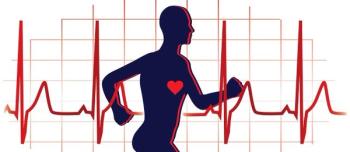
This study enrolled 80 middle-aged patients with stage A heart failure and evaluated them for improvements in several cardiovascular and metabolic risk factors through high-intensity interval training (HIIT) for 1 year and omega-3 fatty acid supplementation.

As a result of being less likely than men to receive lifesaving treatment when experiencing cardiogenic shock, women were significantly less likely to survive in the short and long term.

This systematic literature review reports incidence of adverse drug effects associated with guideline-directed medical therapy for patients with heart failure with reduced ejection fraction.

This new study investigated cardiovascular disease (CVD) risk outcomes among patients with a serious mental illness (SMI) attending primary care clinics that were part of HealthPartners and Park Nicollet in Minnesota and Wisconsin.

A new study of patients receiving care for acute heart failure at Rambam Health Care Campus in Haifa, Israel, investigated how their clinical outcomes might be affected by elevated lactate levels and primary acid-base disorders.




